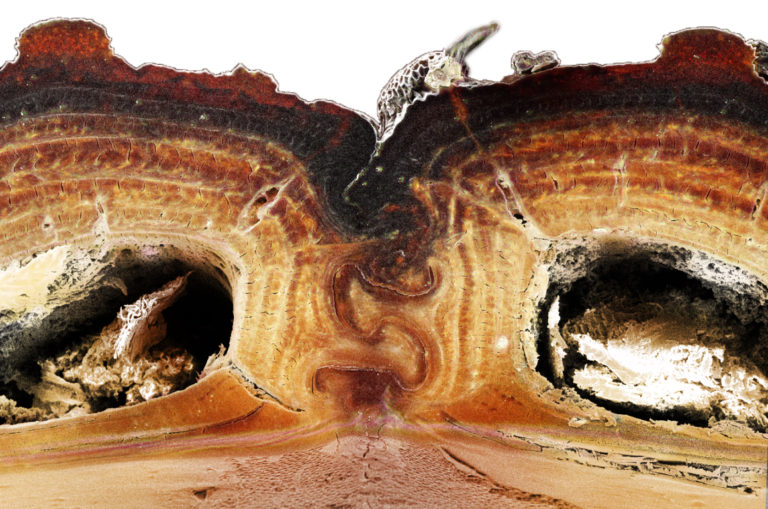October 2020: Now we have uncrushable devil beetles.

Researchers say they’ve cracked the secret to the nigh-uncrackable shell of the diabolical ironclad beetle, a creepy-crawler capable of surviving a rollover from a full-sized car.
How do we know that? Researchers actually hit the beetle with a Toyota Camry — twice — and watched it walk away, as documented in the journal Nature.
One experiment video shows the 1.5-tonne car rolling over the beetle on an asphalt driveway, in an incredible demonstration of its toughness. The beetle briefly plays dead under the tire, then twitches its antennae and walks away thanks to its super-strong exoskeleton.
The two centimetre-long beetle might give some the heebie-jeebies, especially if you’re put off by something with six legs and a bumpy, iron-grey shell that you can’t smash. However, it’s actually a harmless and remarkable result of evolution, with an intricate exoskeleton that allows it to withstand crushing pressure up to 39,000 times its body weight.
That’s like an adult man surviving the crush of 600 elephants all at once, according to researchers’ calculations.
Basically, there isn’t a shoe on Earth that can kill the diabolical ironclad beetle.
“That’s its adaptation,” said David Kisailus, who was the principal investigator on the project. “It can’t fly away, so it just stays put and lets its specifically designed armour take the abuse until the predator gives up.”
Researchers from Purdue University and the University of California, Irvine spent years analyzing the super-strong beetle, which is known as Phloedes diabolicus in Latin. They crushed many beetles along the way, and examined their resilient shells on the microscopic level to see how they’re put together.
They found that the ironclad’s best defence is its elytra, which are the casings that cover the wings on its back. All beetles have these parts, but the diabolical ironclad beetle stopped using its wings and hardened up its elytra millions of years ago.
The ironclad’s elytra are fused together at the seam down the middle, where a series of interlocking sutures allows it to withstand incredible amounts (up to 149 Newtons) of force.

Get breaking National news
“The suture kind of acts like a jigsaw puzzle. It connects various exoskeletal blades — puzzle pieces — in the abdomen under the elytra,” said Pablo Zavattieri, an engineering professor at Purdue University.
“When you break a puzzle piece, you expect it to separate at the neck, the thinnest part,” Kisailus said. “But we don’t see that sort of catastrophic split with this species of beetle. Instead, it delaminates, providing for a more graceful failure of the structure.”
Delamination means it splits into layers, rather than shattering outright.
Researchers say humans can learn a lot from this “little tank,” especially if we can adapt its jigsaw design for other structures and materials.
The diabolical ironclad beetle has a name to rival the Asian giant hornet, a.k.a. the “murder hornet” that captured headlines back in May. However, the beetle isn’t nearly as threatening as the hornet, which is slowly spreading into North America from its habitat overseas.
Washington officials announced on Friday that they’d found the first confirmed murder hornet nest in the United States.
Murder hornets pack an excruciating sting, but at least you can kill them with a boot if they spread to your area.
You probably won’t ever see the diabolical ironclad beetle in person, unless you go to the deserts of the southwestern United States. The beetle likes to hangs out under rocks and between the trunk and the bark of trees.
However, if you do come across the beetle in your house, do yourself a favour: scoop it up and toss it outside.
You’ll be saving a remarkable piece of natural engineering, while also saving yourself the embarrassment of trying to smash it.





Comments